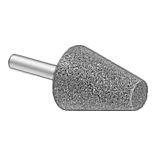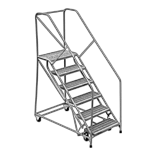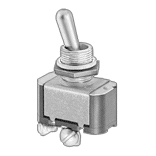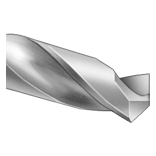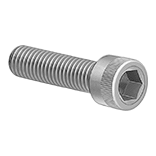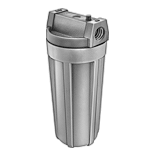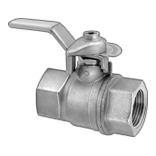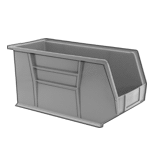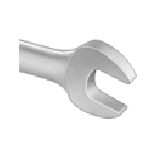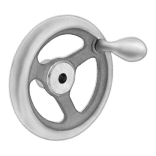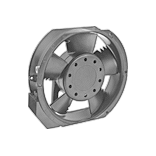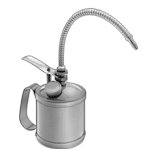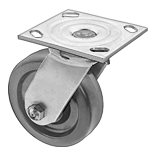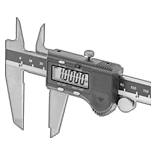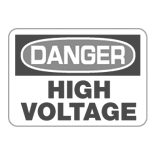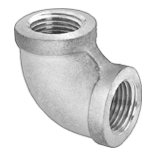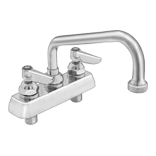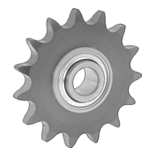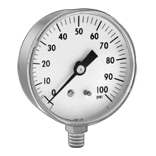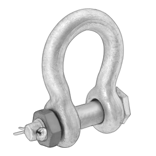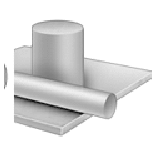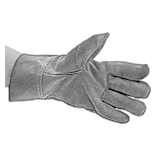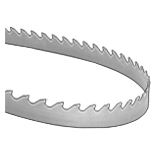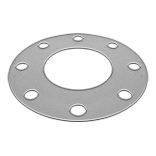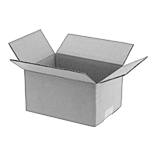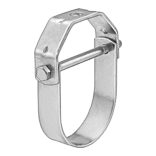Compare over 25 types of plastic to find the right material for you.
How to Identify and Measure Fittings
Pipe size is an industry designation, not the actual size. View information about how to measure threaded and unthreaded pipe and pipe fittings.
More
Thick-Wall Plastic Pipe for Water
With thicker, stronger walls than standard-wall pipe, this Schedule 80 pipe can handle heavy duty industrial plumbing and water supply applications, such as water processing, waste water treatment, and irrigation. It’s made of PVC, which has good corrosion resistance. Pipe meets ASTM D1784 and ASTM D1785 specifications and testing requirements for material quality.
Warning: Never use plastic pipe fittings and pipe with compressed air or gas.
Sealants cannot be sold to Colorado, Connecticut, District of Columbia, Delaware, Illinois, Indiana, Massachusetts, Maryland, Maine, Michigan, New Hampshire, New Jersey, Northern Virginia, New York, Ohio, Pennsylvania, Rhode Island, or Utah due to local VOC (Volatile Organic Compounds) regulations.

- For Use With: Drinking Water, Water
- Maximum Temperature: 140° F
- Specifications Met: ASTM D1784, ASTM D1785, NSF/ANSI 61
- Fittings: Use Schedule 80 PVC Plastic
- Flanges; : Use Class 150 PVC Plastic
Pipe for drinking water meets NSF/ANSI Standard 61.
Connect unthreaded pipe to unthreaded female socket-connect fittings using a PVC primer and cement (also known as solvent weld).
Thick-Wall Plastic Pipe Fittings for Water
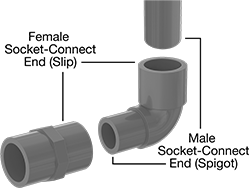
Connect these fittings to Schedule 80 pipe. With thicker, stronger walls than standard-wall fittings, they can handle heavy duty supply applications, such as water processing, wastewater treatment, and irrigation. Fittings are plastic for good corrosion resistance. They meet ASTM specifications and testing requirements for material quality.
Fittings for drinking water meet NSF/ANSI Standard 61.
Attach socket-connect ends to unthreaded pipe or another socket-connect fitting with a PVC primer and cement (also known as solvent weld).
Note: For fittings that are not rated for pressure, you can use the pressure rating of the plastic pipe as a reference. Threaded fittings are limited to 50% of the rated pressure of the pipe.
Warning: Never use plastic pipe fittings and pipe with compressed air or gas.

- For Use With: Drinking Water, Water
- Maximum Temperature: 140° F
- Specifications Met: ASTM D1784, NSF/ANSI 61
- Pipe Nipples and Pipe: Use Schedule 80 PVC Plastic
- Flanges: Use Class 150 PVC Plastic

- For Use With: Drinking Water, Water
- Maximum Temperature: 140° F
- Specifications Met: ASTM D1784, NSF/ANSI 61
- Pipe Nipples and Pipe: Use Schedule 80 PVC Plastic
- Flanges: Use Class 150 PVC Plastic
| Pipe Size | Socket Depth | OD | ID | Wall Thick. | Material | Color | Each | |
| 8 | 4" | 8 5/8" | 7.625" | 0.5" | PVC Plastic | Dark Gray | 00000000 | 0000000 |

- For Use With: Drinking Water, Water
- Maximum Temperature: 140° F
- Specifications Met: ASTM D1784, NSF/ANSI 61
- Pipe Nipples and Pipe: Use Schedule 80 PVC Plastic
- Flanges: Use Class 150 PVC Plastic
| Pipe Size | Socket Depth | OD | ID | Wall Thick. | Material | Color | Each | |
| 8 | 4" | 8 5/8" | 7.625" | 0.5" | PVC Plastic | Dark Gray | 00000000 | 0000000 |

- For Use With: Drinking Water, Water
- Maximum Temperature: 140° F
- Specifications Met: ASTM D1784, NSF/ANSI 61
- Pipe Nipples and Pipe: Use Schedule 80 PVC Plastic
- Flanges: Use Class 150 PVC Plastic
| Pipe Size | OD | ID | Wall Thick. | Drive Size | Material | Color | Each | |
| 8 | 8 5/8" | 7.625" | 0.5" | 9 23/32" | PVC Plastic | Dark Gray | 00000000 | 0000000 |
Thick-Wall Plastic Pipe Flanges for Water
- For Use With: Drinking Water, Water
- Pressure Class: 150
- Maximum Temperature: 140° F
- Specifications Met: ASTM D1784, NSF/ANSI 61
- Pipe Nipples and Pipe: Use Schedule 80 PVC Plastic
- Fittings: Use Schedule 80 PVC Plastic
Also known as Pressure Class 150 flanges, these flanges have thick, strong walls to handle heavy duty industrial plumbing and water supply applications, such as water processing, waste water treatment, and irrigation. They meet NSF/ANSI 61 for drinking water. Bolt two same-size flanges together with a gasket (sold separately) to create an access point within a line. All are PVC, which has good corrosion resistance. They meet ASTM D1784 specifications and testing requirements for material quality.
Warning: Never use plastic pipe flanges and pipe with compressed air or gas.
Sealants cannot be sold to Colorado, Connecticut, District of Columbia, Delaware, Illinois, Indiana, Massachusetts, Maryland, Maine, Michigan, New Hampshire, New Jersey, Northern Virginia, New York, Ohio, Pennsylvania, Rhode Island, or Utah due to local VOC (Volatile Organic Compounds) regulations.
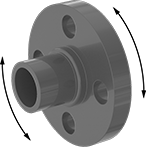
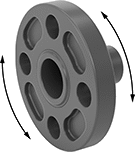
Attach socket-connect ends to unthreaded pipe or another socket-connect fitting with a PVC primer and cement (also known as solvent weld).
Rotating flanges are also known as Van Stone flanges; they swivel for easy bolt hole alignment.
CPVC Pipe for Hot Water
Made of CPVC, this pipe can withstand high temperatures up to 170° or 200° F. It meets NSF/ANSI Standard 61 for drinking water. Also known as Schedule 80 pipe, it has thick, strong walls for use in heavy duty industrial plumbing and water supply applications, such as water processing and waste water treatment. Pipe has good corrosion resistance. It is comparable to Corzan.
Connect unthreaded pipe to unthreaded female socket-connect fittings using a CPVC primer and cement (also known as solvent weld).
ASTM D1784 pipe meets specifications and testing requirements for material quality.
Warning: Never use plastic pipe fittings and pipe with compressed air or gas.

- For Use With: Acetic Acid (10%), Calcium Chloride, Deionized Water, Drinking Water, Hydrochloric Acid (25%), Nitric Acid (10%), Phosphoric Acid (85%), Salt Water, Sodium Hydroxide (50%), Sulfuric Acid (75%), Water
- Maximum Temperature: 200° F
- Specifications Met: ASTM D1784, NSF/ANSI 61
- Fittings: Use Schedule 80 CPVC plastic
- Flanges: Use Class 150 CPVC plastic
CPVC Pipe Fittings for Hot Water

Made of CPVC, these fittings can handle high temperatures. They have thick, strong walls to handle heavy duty industrial plumbing and water supply applications, such as water processing and waste water treatment. They also have good corrosion resistance. These fittings are comparable to Corzan. Some meet ASTM D1784 specifications and testing requirements for material quality.
Fittings for drinking water meet NSF/ANSI Standard 61.
Schedule 80 fittings have thick, strong walls for heavy duty, industrial applications.
Note: For fittings that are not rated for pressure, you can use the pressure rating of the plastic pipe as a reference. Threaded fittings are limited to 50% of the rated pressure of the pipe.
Warning: Never use plastic pipe fittings and pipe with compressed air or gas.

- For Use With: See table
- Maximum Temperature: 200° F
- Specifications Met: ASTM D1784, NSF/ANSI 61
- Pipe Nipples and Pipe: Use Schedule 80 CPVC Plastic
- Flanges: Use Class 150 CPVC Plastic
Attach socket-connect ends to unthreaded pipe or another socket-connect fitting with a CPVC primer and cement (also known as solvent weld).
(A) | (B) | |||||||||||
|---|---|---|---|---|---|---|---|---|---|---|---|---|
| Pipe Size | OD | ID | Wall Thick. | Pipe Size | Socket Depth | For Use With | Material | Schedule | Color | Max. Pressure | Each | |
| 8 | 8 5/8" | 7.625" | 0.5" | 6 | 3 1/16" | Acetic Acid (10%), Calcium Chloride, Deionized Water, Drinking Water, Hydrochloric Acid (25%), Nitric Acid (10%), Phosphoric Acid (85%), Salt Water, Sulfuric Acid (75%), Water | CPVC Plastic | 80 | Light Gray | Not Rated | 00000000 | 0000000 |
Clear Scratch- and UV-Resistant Cast Acrylic Tubes

- Color: Clear
- Temperature Range: 0° to 150° F
- Tensile Strength: 10,000-11,250 psi (Good)
- Impact Strength: 0.3-0.4 ft.-lbs./in. (Poor)
- Hardness: Rockwell M94-M100 (Hard)
- For Use Outdoors: Yes
- Specifications Met: See table
Fabricate containers, tanks, and lenses for light fixtures with these scratch- and UV-resistant cast acrylic tubes. Cast acrylic, which is comparable to Lucite and Plexiglas® Acrylic, is easier to machine than extruded acrylic. This material stands up to outdoor use better than polycarbonate and maintains clarity over time.
